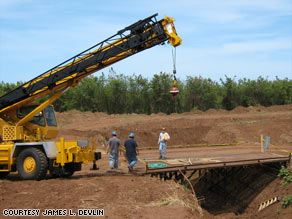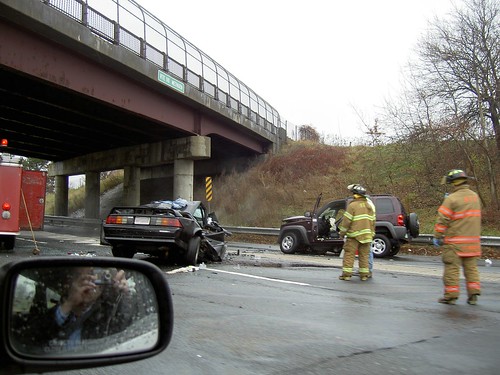(Source: CNN)
Their livelihood was being threatened, and they were tired of waiting for government help, so business owners and residents on Hawaii’s Kauai island pulled together and completed a $4 million repair job to a state park — for free.

Volunteers bring in a heavy crane for work on a bridge to Polihale State Park on Kauai last month.
Polihale State Park has been closed since severe flooding destroyed an access road to the park and damaged facilities in December.
The state Department of Land and Natural Resources had estimated that the damage would cost $4 million to fix, money the agency doesn’t have, according to a news release from department Chairwoman Laura Thielen.
“It would not have been open this summer, and it probably wouldn’t be open next summer,” said Bruce Pleas, a local surfer who helped organize the volunteers. “They said it would probably take two years. And with the way they are cutting funds, we felt like they’d never get the money to fix it.”
And if the repairs weren’t made, some business owners faced the possibility of having to shut down.
Ivan Slack, co-owner of Napali Kayak, said his company relies solely on revenue from kayak tours and needs the state park to be open to operate. The company jumped in and donated resources because it knew that without the repairs, Napali Kayak would be in financial trouble.
“If the park is not open, it would be extreme for us, to say the least,” he said. “Bankruptcy would be imminent. How many years can you be expected to continue operating, owning 15-passenger vans, $2 million in insurance and a staff? For us, it was crucial, and our survival was dependent on it. That park is the key to the sheer survival of the business.”
So Slack, other business owners and residents made the decision not to sit on their hands and wait for state money that many expected would never come. Instead, they pulled together machinery and manpower and hit the ground running March 23.  Watch the volunteers repairing the road »
Watch the volunteers repairing the road »
And after only eight days, all of the repairs were done, Pleas said. It was a shockingly quick fix to a problem that may have taken much longer if they waited for state money to funnel in.
“We can wait around for the state or federal government to make this move, or we can go out and do our part,” Slack said. “Just like everyone’s sitting around waiting for a stimulus check, we were waiting for this but decided we couldn’t wait anymore.”
Thielen has been waiting, too. She wants the legislature to approve her Recreation Renaissance project, a $240 million booster shot to help fix parks across the state. Without it, at least five state parks may be forced to close, and there would be no emergency repair money to fix Polihale State Park.
“We shouldn’t have to do this, but when it gets to a state level, it just gets so bureaucratic, something that took us eight days would have taken them years,” said Troy Martin of Martin Steel, who donated machinery and steel for the repairs. “So we got together — the community — and we got it done.”
Click here to read the entire story and to view awesome pictures from this wonderful community initiative.











